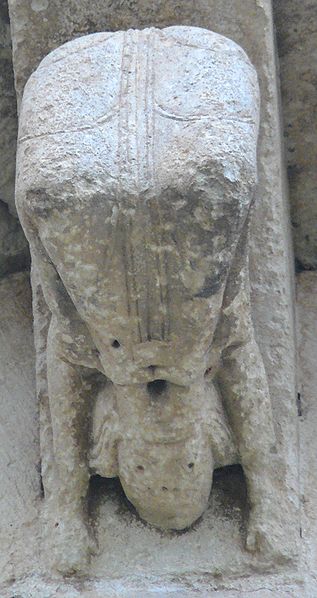Such dancers could be athletic and graceful or tumble in a jesting manner, playing for laughter. They could also be well paid and respected - Richard II paid John Katerine, a dancer from Venice, over £6 for playing and dancing before him, a sum not far short of £3,000 today.
Amongst the minstrels themselves there was a kind of ranking, with professional musicians at the top and jugglers and puppeteers at the bottom. Jugglers especially were considered at the time to be coarse, especially those who made a living wandering from fair to fair or village to village. Jugglers were felt to have few morals and to be able to do their tricks through magic - always a dangerous idea in the Middle Ages.
However jugglers were also held in affection, even by the church, and many illuminated manuscripts show jugglers. From the time of William the Conqueror, a 'King of the Jugglers' appeared at the court and would continue to appear through the Middle Ages. Whoever held this title had many rights to go with it. There is also a medieval legend of a juggler who, having nothing else to give, made an 'offering' of his juggling skills before a statue of the Virgin and Child in church. According to some variations of this story, the Madonna or Jesus caught one of the balls.
Juggling using different objects is more difficult than using the same objects. Bouncing objects off a floor is easier than tossing them in the air, and throwing all the objects in the air - called multiplexing in modern juggling - is easier than one after another.
Balls were commonly used for juggling but other things could also be used. In the Irish story of Cuchulainn, the hero juggles nine apples. The later Viking sagas also mention juggling and sometimes with weapons - Snorri Sturluson writes in one saga, "In the doorway of the hall, Gylfi saw a man juggling with knives, keeping seven in the air at a time."
Geraint, my Welsh hero, is a tumbler and juggler. To read more about him and the medieval exorcist Yolande, please take a look at "Dark Maiden"
[Illustrations from Wikimedia Commons.]
Lindsay Townsend




Great post. I had no idea about the esteem they were held in, and the contortionist lady dancer was a revelation to me. A fascinating post/
ReplyDeleteSo interesting. Fun to see the types of entertainment people valued through the years, and which have withstood the test of time. Great post.
ReplyDeleteMy kids had a teacher in elementary school that taught them how to juggle. They were both really good at it! I don't think I have ever been that coordinated! LOL Great post, Lindsay. I didn't know they were so highly sought after and thought of during medieval times.
ReplyDeleteThanks, C.A., Ann, Cheryl. From the famous legend of the juggler and the Virgin Mary it seems they were held in grt affection in the middle ages. And girls/women could be part of it.
ReplyDeleteGreat research on a fascinating topic, Lindsay! I consider jugglers to be the first and the ultimate multi-taskers. I have difficulty keeping multiple "balls" in the air these days, so to even consider having knives flashing around my head, or God forbid, nine balls, seems beyond fantastic, scary, and impossible all in the same breath. Imagine if that were someone's only talent today. I wonder how many professional jugglers can support themselves with their talent today.
ReplyDeleteI think the juggle is an underused character in medieval romances. Anne Stuart did one with her hero being a court jester. I loved it.
ReplyDeleteGreat article.
Great article, Lindsay. I thoroughly enjoyed the multi-dimensional Geraint in "Dark Maiden". He was a great foil to the highly focused Yolande.
ReplyDeleteNow this was a fascinating post, Lindsay. I always thought entertainers in that time period were not very respected and poorly paid. But I see that this was the main entertainment of the day and, like today's movie and TV stars very well paid. I wonder what Shakespeare was paid.
ReplyDeleteI read Dark Maiden some time back and enjoyed it immensely.
All the best...
Great post Lindsay, and what a wonderful cover. I too, didn't realize that jugglers were so respected for their gift. I used to balance on the balance beam,but I know better than to try to juggle anything. Lordy be,everything would go flyin--in the wrong direction for sure. I too read this story, thoroughly enjoyed it, and am hoping you have much success with this one again.
ReplyDeleteThank you, Beverly, Sarah, Linda, Maggie, Deborah, for your feedback and comments. I do wonder if I should revisit Yolande and Geraint - it's a question of finding a romance 'handle'
ReplyDeleteDidn't you do one about Yolande's daughter? I found the making of 'sweet' confections fascinating. Ha! There's another blogpost for you.
Delete